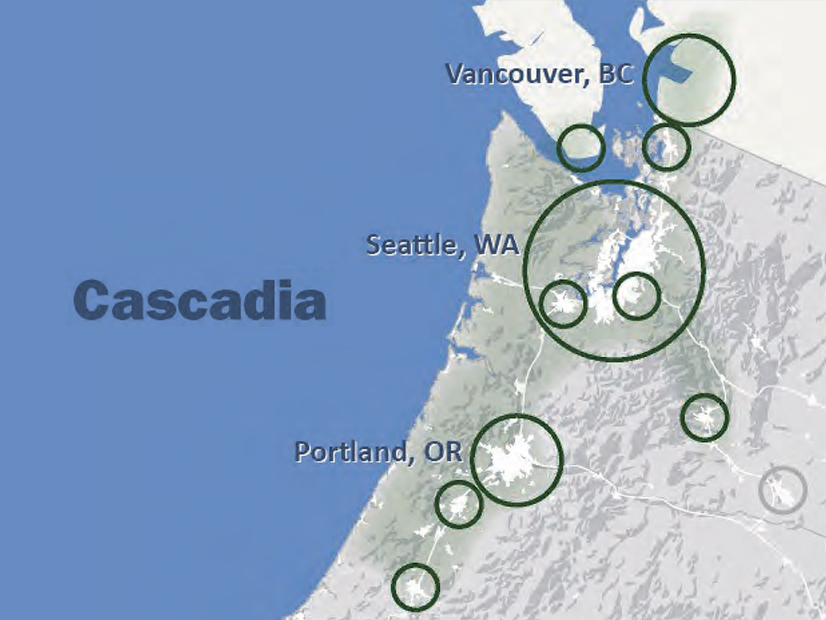
The leaders of Oregon, Washington and British Columbia signed a memorandum of understanding Tuesday to push for development of an ultra-high-speed train line from Portland to Vancouver, B.C.
The rail line under consideration would support a train going 250 mph for 310-320 miles between Vancouver and Portland, depending on location of the end stations. Seattle would be the primary midway stop. Train systems capable of going 250 mph exist in China, Japan, Spain and France.
Oregon Gov. Kate Brown, Washington Gov. Jay Inslee and British Columbia Premier John Horgan signed the MOU at the annual Cascadia Innovation Corridor Conference, a gathering to discuss the common economic issues among the two U.S. states and one Canadian province.
“We will coordinate with our partners on pursuing federal funding for a high-speed rail and engage communities throughout our region,” Inslee said in a press release. The press release noted Congress is working on a high-speed rail funding program.
This concept of a high-speed Seattle-to-Vancouver rail has been on the drawing board for at least 20 years but has remained dormant. Inslee has pushed the concept as a way to cut back on pollution from vehicles traveling Interstate 5 from Vancouver to Portland. I-5 is routinely plagued with traffic jams from 20 miles north to 35 miles south of Seattle
“A two-track high-speed guideway can reliably support 6-8 trains per hour in each direction,” according to a report presented to the 2016 Cascadia Innovation Corridor Conference by engineering services firm WSP. “This would mean a train connecting Seattle and Vancouver every 10-15 minutes, with some operating as non-stop express and others stopping at Everett and Bellingham.”
In 2016, WSP estimated that an ultra-high-speed rail line from Seattle to Vancouver would cost $125 million to $1 billion per mile depending on the terrain and other factors. So far, none of the three governments have provided a cost estimate for a 310-mile project.
On Tuesday, Inslee pointed to a 2018 Washington Department of Transportation study of the concept that concluded the rail line could create $355 billion in economic growth while cutting back on greenhouse gases and allowing people to live in affordable housing away from larger, more expensive cities.
That same study also said the land for such a line needs to be analyzed, the technology needs to be studied, and finances and funding need to be worked out. Also, a governing body for such a venture must be created.


